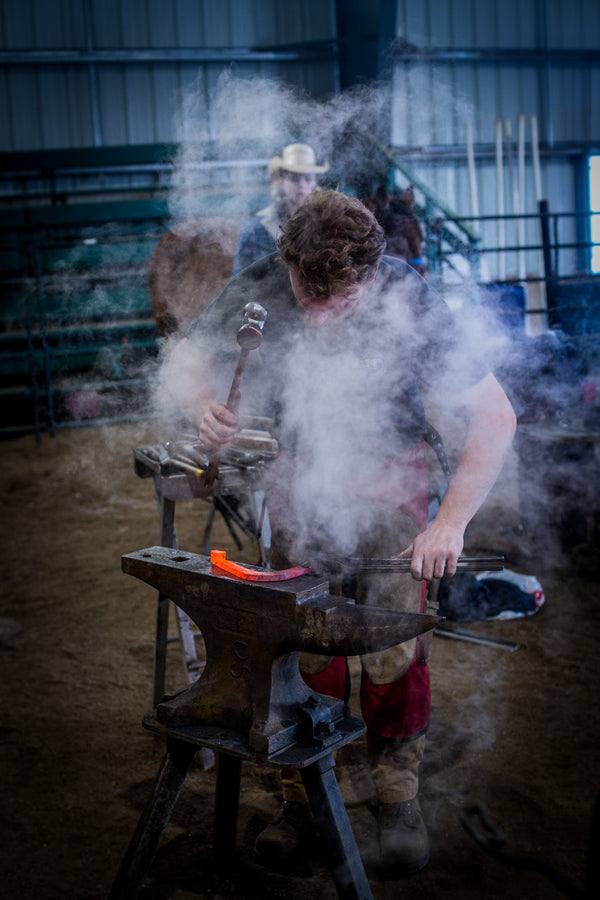Dragon's Skin (D.S.) is the Revolutionary Coating for Ceramic Blanket. It is engineered to provide a hard-surfacing, thin skin-coat for wool (refractory ceramic 'kaowool'). It ensures ceramic wool fibers are not broken down and aerosolized, avoiding asbestos-like inhalation condition risks (Aerosolized fibers, once inhaled, can remain in your lungs permanently). Sealing ceramic wool from open-air fire box exposure is ALWAYS a good idea, especially if you don't know the rating of the wool.
Engineered in Canada - an industrial pioneering product.
Dragon Skin PLUS includes a few fine 304ss needles in the dry mix for durability and performance. Dragon's skin can be applied as thin as 1/16" thick (up to much thicker if needed). It adds strength, efficiency, and reflectivity.
Unlike classic castables, which only bond to existing surfaces mechanically, Dragon-Skin adds a chemical bonding capacity.
Step 1. Liberally spray your wool with rigidizer, then fire your burner until the dye in the rigidizer becomes translucent. Allow it to cool.
Step 2. With a pencil, poke holes in the rigidized wool (creating 'root tracts'), allowing the coating to gain extra grip and increased durability.
Step 3. D.S. contains a few fine Stainless Steel metal fibers (called 'needles') for added crosslinking toughness. Inserting some needles into the wool (like porcupine quills) promotes grip and durability.
The tried and true method of poking holds in rigidized wool with a pencil, helps all coatings gain purchase to the wool increasing its durability. Sticking a few stainless steel needles into the wool improves adhesion & durability.
(Alternatives: Traditional products like Kast-O-Lite Li 30 Li-G+ & KAST-O-LITE 30 Li work great but they have to be applied at least 3/8" thick. KOL adds insulation value, and structurally substance (more weight). KOL performs best with an ITC-100 HT reflective coating.
Dragon Skin comes with as a Dry Part A (including stainless steel needles), and a Wet Part B.
Dragon Skin is mixed to a watery blend (unlike most conventional castables, which resemble sour cream once mixed). Apply it with the aid of gravity. Flip or roll your forge or foundry and apply the coating to the horizontal surface (or lower 1/3 of a curve). Allow it to soak and stiffen before the unit is rotated to coat another surface. Once coated lightly, you can add a second coat where added durability is needed. (IE; on the lower walls, around side port 'windows', & where abrasion or contact is likely.)
The application is quick and straightforward. It is best applied with a large spoon, a small trowel, and a brush. The added liquidity bites firmly into the surface fibers of the Kaowool for a superior bond. (Ensure your wool is well rigidized first).
Allow the high-moisture D.S. mix a few minutes to soak in, cure, and evaporate. The optimal way to promote hardening without cracks is to lightly cover the dragon skin with a damp burlap or a cloth to slow evaporation until the castable has acquired some strength.
Ideally, let the skin air dry for 2 days and then add low heat for a few hours to evaporate any remaining humidity without creating steam. Finally, gradually bring the forge up to half-temp (1200°F) (over a few hours) for hard setting and full strength.
Dragon Skin adds radiant heat reflectivity and efficiency to wool insulation. For optimal reflectivity and industry-leading performance, apply a thin (or ultra-thin) coat of ITC-100 HT.
Coverage: A small forge can be skinned with a small kit. Of course, coverage will be doubled when applied 1/16" instead of 1/8" thick.


